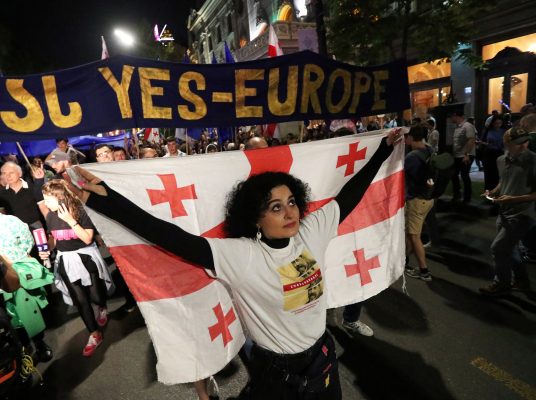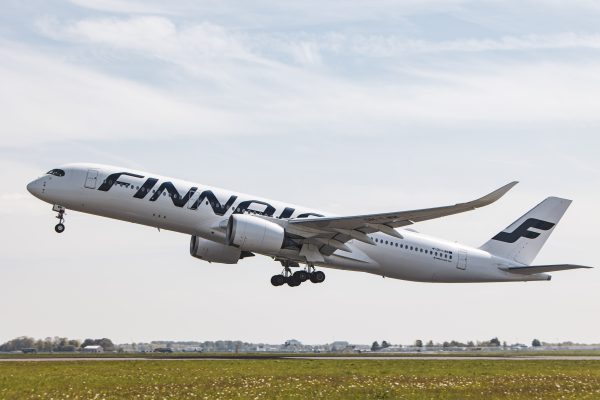CSTO is hosting a series of training exercises in Belarus in September in a demonstration of unity to paper over divisions accentuated by Russia’s war of aggression against Ukraine. While Belarus has openly assisted Russia, other CSTO members have been far more circumspect, if not hostile.
As a statement of unity, it was an abject failure; Armenia not only refused to send troops but also announced on September 6 that its army would join a previously unannounced exercise with the US.
Armenia is not alone in taking a more circumspect view of the alliance. Kazakhstan, too, has been distancing itself, while Kyrgyzstan canceled a CSTO exercise in October only one day before it was due to begin.
For Kazakhstan, in particular, this reflects quite a shift. In January 2022, weeks before the Ukraine invasion, its appeal to the six-nation CSTO for military help to put down fuel protests was swiftly answered. The Kremlin sent thousands of troops, and the protests ended, although many remained unhappy with the Russian presence in their country.
However, the full-scale invasion of Ukraine was too much for many CSTO member states, all of whom have a recent memory of Soviet occupation. In Kazakhstan, the government said it would not recognize the self-proclaimed Donetsk and Luhansk People’s Republics and rejected Russia’s attempted territorial gains in Ukraine. The Kazakhs sent humanitarian aid to Kyiv.
President Kassym-Jomart Tokayev not only slapped down Russian hopes he would recognize Russia’s illegally annexed areas in 2022 but skipped the so-called Russian Davos in St. Petersburg in June this year.
The change in outlook reflects a shift in Kazakh society that is in part driven by demographics. When the Soviet Union collapsed in 1991, Russians made up 37% of the country’s population and ethnic Kazakhs just under 40%. Thirty years later, a census showed Kazakhs made up 70% of the population while the Russian minority — through emigration and lower birth rates — had dropped to 18%. This change has been driven by a government program to encourage people with Kazakh heritage to return to Kazakhstan and a push for Kazakhification, emphasizing the country’s language, culture, and traditions.
Beyond such efforts, Kazakhstan has also explored ways to enhance its relationship with the United States. Washington has provided billions to Kazakhstan to assist with “peace and security, democratic reform, and economic growth,” while the US private sector has invested over $31bn in commercial ventures.
In February, Secretary of State Antony Blinken met with Kazakh officials, as well as other Central Asian leaders, to discuss future cooperation between the U.S. and the region. President Joe Biden is also scheduled to meet with Central Asian leaders during the United Nations General Assembly in September.
At the same time, the European Union (EU) has been seeking ways to enhance its relationship with Kazakhstan. The EU already accounts for 48% of Kazakhstan’s total foreign direct investment and 40% of its external trade and has established an Enhanced Partnership and Cooperation Agreement with Astana. The bloc’s High Representative Josep Borrell met Deputy Prime Minister Murat Nurtleu to discuss reform and modernization.
Armenia, a fellow CSTO member, is also having second thoughts about its relationship with Russia as Moscow’s weakness and unwillingness to assist it becomes increasingly clear. Article 4 of the CSTO treaty says that an attack on one member will be an attack on all, but when Azerbaijan launched its 2020 war to recover the Nagorno-Karabakh enclave, the Kremlin sat on its hands and refused to act as Armenia was humiliatingly defeated.
Armenia had hoped for Russia’s assistance, but while Moscow worked with Turkey to broker a ceasefire — and sent a peacekeeping force to the region — that was the limit of its activity. Armenian officials are not skeptical that they can rely on its protection even as fears of escalation mount.
Armenia has begun to scale back its involvement with CSTO and refused to host or participate in an alliance training exercise in January. It also “renounced its right to take part in the [CSTO’s] leadership rotation,” and there have been suggestions it may leave the organization. In September, the Armenian representative to CSTO was withdrawn.
Seeking to find alternative means of protecting ethnic Armenians in Nagorno-Karabakh — a community of about 120,000 currently being starved in an Azeri siege — Armenians have started to turn West. Secretary Blinken met the Armenian and Azerbaijani foreign ministers in June to discuss the ongoing Nagorno-Karabakh conflict and said the US will continue to meet with both countries to try to reach an agreement.
Meanwhile, the EU announced a mission to Armenia to “contribute to stability in the border areas.” The bloc will “conduct routine patrolling and report on the situation” in Nagorno-Karabakh. Aside from this work, European Council President Charles Michel met with Armenian and Azerbaijani officials on numerous occasions in 2022 and 2023 to try to defuse the conflict.
Once seen as a central foreign policy plank for Putin and his regime, CSTO is now very visibly fraying. The five non-Russian members are seeking alternative security measures to ensure their safety. This has presented the US and EU with an opportunity to enhance their role in the region, especially with Kazakhstan and Armenia but also more widely.
With CSTO failing, Russian influence is on the slide.
Mark Temnycky is an accredited freelance journalist covering Eurasian affairs and a nonresident fellow at the Atlantic Council’s Eurasia Center. He can be found on Twitter @MTemnycky




